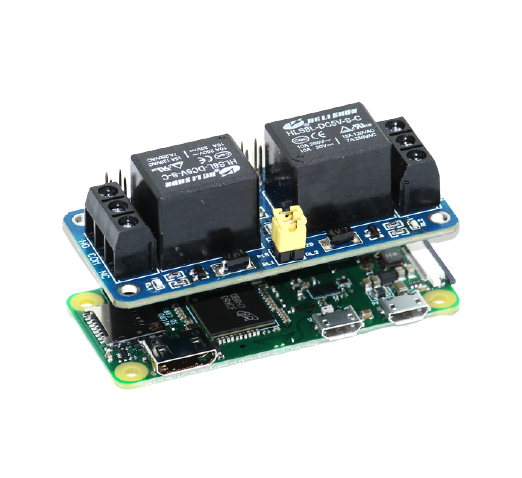Difference between revisions of "Zero-Relay"
From SB-Components Wiki
(→Python) |
|||
| Line 36: | Line 36: | ||
== Installation == | == Installation == | ||
==== Python ==== | ==== Python ==== | ||
| + | * Stack Zero-Relay HAT on Raspberry Pi Zero or any Raspberry Pi 40 Pin GPIO header. | ||
* Open Terminal and clone/download the repository by typing below command in terminal: | * Open Terminal and clone/download the repository by typing below command in terminal: | ||
Revision as of 06:46, 24 May 2021
Zero Relay
Zero Relay provides a solution for controlling high current/voltage devices and makes your home appliances intelligent. It could be a nice solution for controlling devices that could not be directly controlled by RPi's Digital I/Os. The standardized shield form factor enables a smooth connection with Raspberry Pi and compatibles. It is a 2 channel relay shield with 7A 250 Volts AC output and 10A 30Volts DC output ratings. Zero Relay is designed for triggering at high voltage levels.
Features
- 2 High-quality Relay and loads up to 250VAC/7A, 30VDC/10A.
- Standardized shield shape and design.
- LEDs working status indicators for each Relay.
- High-quality Relays.
- 40 Pin Stacking Header for accessing GPIO of RPi.
- Mounting holes
Specifications
- Channel - 2 CH
- Operating Voltage - 5V
- AC Control Voltage - 7A / 250V
- DC Control Voltage - 10A / 30V
Pinout
| Relays | BOARD | BCM |
|---|---|---|
| Relay 1 | 15 | GPIO 22 |
| Relay 2 | 29 | GPIO 5 |
Installation
Python
- Stack Zero-Relay HAT on Raspberry Pi Zero or any Raspberry Pi 40 Pin GPIO header.
- Open Terminal and clone/download the repository by typing below command in terminal:
git clone https://github.com/sbcshop/Zero-Relay.git
- Your code will be downloaded to '/home/pi' directory. Use 'ls' command to check the list of directories and 'cd' command to enter directory.
cd Zero-Relay
- B>'test2.py' is example code for Zero Relay. Run test2 file and play with Zero Relay by running below python command.
python3 test2.py
GPIO 4 Relay Not working Fix
- Click on Start button >> Preferences >> Raspberry Pi Configuration, Then click on Interfaces Tab and make sure 1-Wire is disabled.
- Click on OK button then reboot Raspberry pi.


